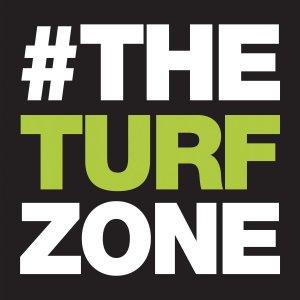The Turf Zone Podcast

Alabama Turfgrass Association – Some Random Thoughts about the Benefits of Turf
ATA Turf Times – Scott McElroy, Ph.D. Professor, Turfgrass & Weed Science, Auburn University • Auburn, Alabama, USA
Sometimes I just want to write an article that is a little more lighthearted. I hope you enjoy.
I have been going through a lot of my old pictures from traveling and I came to a conclusion – people love turfgrass. I realize this is a not so startling conclusion considering the audience who is reading this, but there is something sobering when considering this basic thought. People tend to gravitate to a green, healthy stand of turf. So much so that signs must be posted to keep said persons “off the grass,” (Photo 1) which I find completely absurd considering turfgrasses have evolved to withstand trampling (and being eaten).
As turfgrass managers, broadly speaking, we fully understand the aesthetic value, usability for sport, and environmental benefits of turfgrass, but have you ever considered how much humans enjoy planting their posterior on a patch of turf? Do you yourself ever stop and simply sit down on a lawn or fairway and simply enjoy the comfort it provides? It is glorious. Truly. To steal from the phrase, “stop and smell the roses,” sometimes I think turf managers should stop and plant their cheeks down on those green blades. Maybe take off their shoes and feel the blades between their toes.
On a visit to Paris a few years ago, my family and I happened to be traversing the city on a bank holiday (we don’t let banks tell us when to holiday in the United States so this was a bit odd to me, but I went with it anyway). When making our way through Luxembourg Garden, we tried to find a spot to have a picnic and found all the available space to be taken. People were sprawled out on the lawns, enjoying the spring sun. Were they sitting on the gravel paths? Absolument pas! On a visit to Kensington Palace, I took a picture of people enjoying a sunny day in Hyde Park in London. (Photos 2a, 2b) Do you see anyone sitting on the sidewalk? Absolutely not! A sidewalk is for the feet, but grass is for the… umm, rear-end to sit down. I suppose.
One of the reasons I write all of this is because it seems that turfgrass is constantly under attack by those who only seek to see the negative. For example, here is a popular podcast and with the completely unbiased title: How Stupid is Our Obsession with Lawns? http://freakonomics.com/podcast/how-stupid-obsession-lawns/]. If you take the time to listen to the podcast the one thing you will hear is that all turfgrass seems to fall under the same category and while the management of utility turf along roadsides is vastly different than that of golf or sport fields, outsiders seem to view them as the same. The fact is, when viewed this way, the vast majority of turf never receives the slightest bit of additional irrigation, fertilization, or pesticide application. The overwhelming majority of turf can be classified as unmanaged and the turf that is intensely managed represents only a small percentage of all turfgrass out there.
There are the turfgrass zealots that will defend turf under any circumstance. That, for good or bad, is not me. In my opinion, the majority of turfgrass should remain managed as low-intensity utility turf with the intensely managed turf reserved for parks and lawns, golf, and other sports turf. And the utilization of high-intensity vs low-intensity turfgrass should change depending on the resources of the region. Water availability in Southern California is vastly different than the Southeastern US and the same constraints cannot be placed on both areas. The utilization of turfgrass in desert or semi-desert environments such as Los Angeles should be limited due to scarcity of water.
In the end, the determining factor that distinguishes if a turf stand should be intensely managed or not, should depend on how people want to use it. Do people want to walk on it? Do they want to play a game on it?






 Visit Podcast Website
Visit Podcast Website RSS Podcast Feed
RSS Podcast Feed Subscribe
Subscribe
 Add to MyCast
Add to MyCast